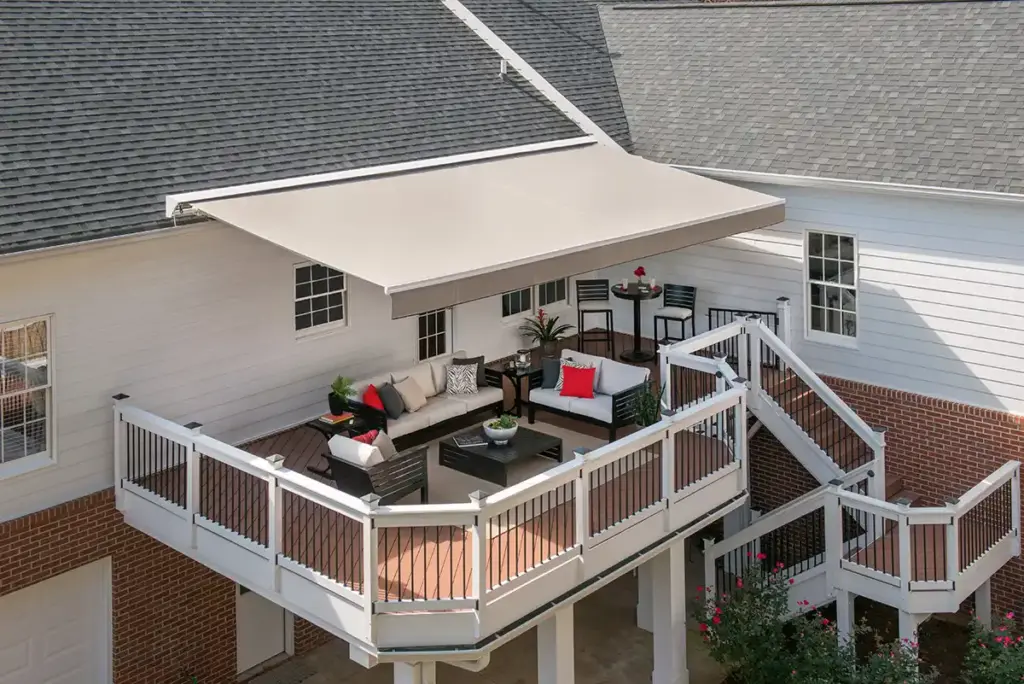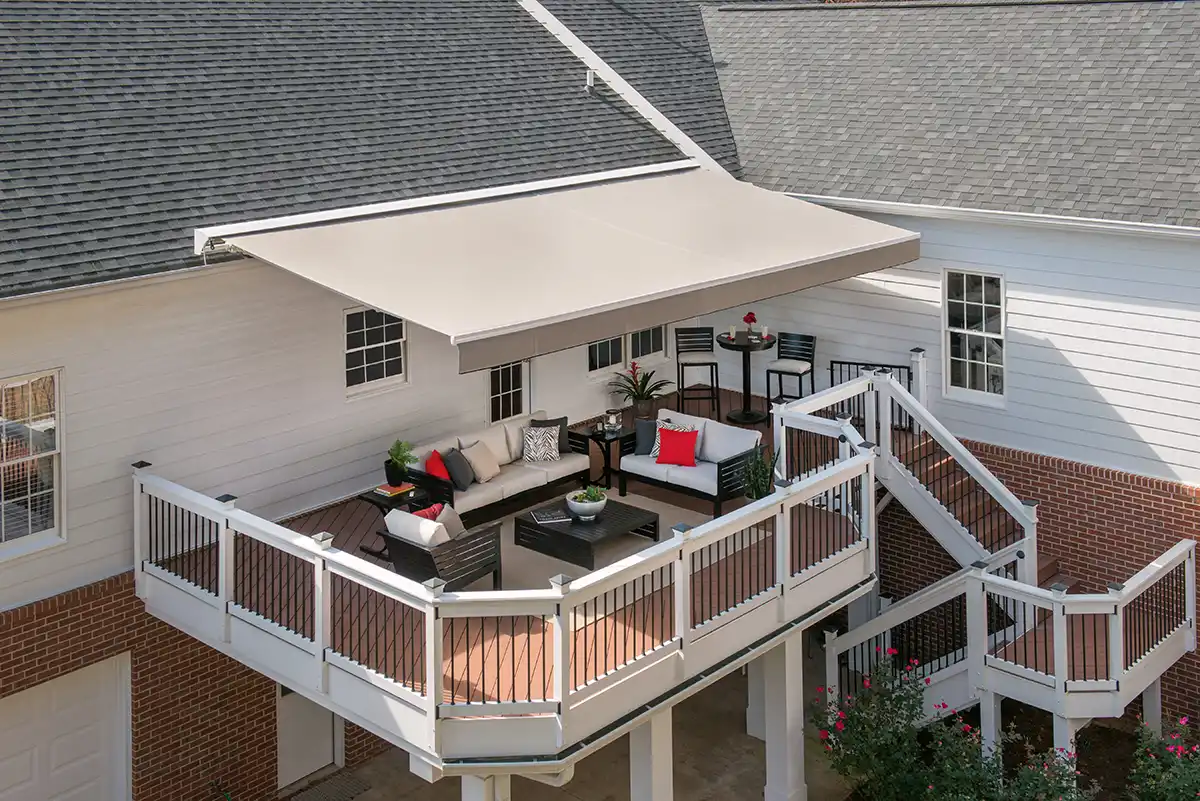
Unveiling the Cost of Awning Installation: A Comprehensive Guide
Adding an awning to your home or business can significantly enhance its curb appeal, provide valuable shade, and even lower energy costs. But before you jump into this upgrade, it’s crucial to understand the cost of awning installation. This guide will break down the various factors influencing the price, helping you make an informed decision and budget effectively. We’ll explore different awning types, materials, installation complexities, and regional price variations to give you a complete picture of what to expect.
Factors Influencing Awning Installation Costs
Several elements contribute to the overall cost of awning installation. Understanding these factors will allow you to better estimate the expense and potentially identify areas where you can save money.
Awning Type
The type of awning you choose is a primary driver of the cost of awning installation. Awnings come in various styles, each with different price points:
- Retractable Awnings: These awnings can be extended or retracted as needed, offering flexibility and control over sun exposure. They tend to be more expensive due to their mechanical components. Expect the cost of awning installation for retractable models to be higher.
- Stationary Awnings: These awnings are fixed in place and provide permanent shade. They are generally less expensive than retractable awnings.
- Window Awnings: Smaller awnings designed to shade individual windows. The cost of awning installation for these is typically lower than larger patio awnings.
- Door Awnings: Similar to window awnings but designed for doorways. They offer protection from the elements and can add a touch of elegance to your entrance.
- Freestanding Awnings: These awnings are not attached to a building and can be placed anywhere in your yard or garden. The cost of awning installation can vary depending on the size and complexity of the structure.
Awning Material
The material of the awning fabric also significantly impacts the cost of awning installation. Common awning materials include:
- Acrylic Fabric: A popular choice due to its durability, water resistance, and fade resistance. It’s a mid-range option in terms of cost.
- Canvas: A traditional awning material that offers a classic look. However, it’s less water-resistant than acrylic and may require more maintenance.
- Vinyl: A cost-effective option that is waterproof and easy to clean. However, it may not be as durable or aesthetically pleasing as other materials.
- Metal: Often used for stationary awnings, metal offers excellent durability and weather resistance. The cost of awning installation for metal awnings can be higher due to the material and installation complexity.
Size and Dimensions
The size of the awning directly affects the material required and the labor involved in installation. Larger awnings will naturally cost more than smaller ones. Accurate measurements are crucial for obtaining an accurate estimate for the cost of awning installation.
Installation Complexity
The complexity of the installation process can also influence the cost of awning installation. Factors that can increase complexity include:
- Mounting Surface: Installing an awning on brick, stucco, or siding can require different techniques and hardware, impacting the labor cost.
- Electrical Work: If you’re installing a retractable awning with a motor, you’ll need to factor in the cost of awning installation that includes electrical wiring and connections.
- Permits: Depending on your location, you may need to obtain permits before installing an awning. The cost of permits should be included in your overall budget.
- Accessibility: Difficult access to the installation site can increase labor costs.
Labor Costs
Labor costs vary depending on the location, the experience of the installer, and the complexity of the job. It’s essential to get quotes from multiple installers to compare prices and ensure you’re getting a fair deal. Be sure to ask about their experience with awning installation.
Additional Features
Optional features can add to the cost of awning installation. These features may include:
- Motorization: Adding a motor to a retractable awning allows you to extend and retract it with the push of a button.
- Sensors: Wind and sun sensors can automatically retract the awning in adverse weather conditions.
- Lighting: Integrated lighting can add ambiance and functionality to your outdoor space.
- Remote Control: A remote control allows you to operate the awning from a distance.
Average Cost of Awning Installation
While the cost of awning installation can vary widely, here’s a general overview of what you can expect to pay:
- Retractable Awnings: $2,000 to $10,000+
- Stationary Awnings: $500 to $3,000
- Window Awnings: $150 to $800 per window
These are just estimates, and the actual cost of awning installation may be higher or lower depending on the specific factors mentioned above. It’s always best to get a professional quote from a reputable installer.
Breaking Down the Cost: A Detailed Example
Let’s consider a hypothetical scenario to illustrate how the cost of awning installation can break down:
Imagine you want to install a retractable awning over your patio. You choose an acrylic fabric awning with a width of 16 feet and a projection of 10 feet. You also want to add a motor and a remote control.
Here’s a possible breakdown of the costs:
- Awning Material and Frame: $3,500
- Motor and Remote Control: $500
- Installation Labor: $800
- Permits: $100
Total Cost: $4,900
This is just an example, and the actual cost of awning installation may vary. However, it gives you an idea of the different components that contribute to the overall price.
Finding a Reputable Awning Installer
Choosing the right installer is crucial to ensuring a successful awning installation. Here are some tips for finding a reputable installer:
- Get Multiple Quotes: Obtain quotes from at least three different installers to compare prices and services.
- Check Reviews and References: Read online reviews and ask for references from previous customers.
- Verify Licensing and Insurance: Ensure the installer is licensed and insured to protect yourself from liability.
- Ask About Warranty: Inquire about the warranty on the awning and the installation work.
- Get a Written Contract: Before work begins, get a written contract that outlines the scope of work, the price, and the payment schedule.
DIY Awning Installation: Is It Worth It?
While it may be tempting to save money by installing an awning yourself, DIY awning installation is generally not recommended, especially for retractable awnings. Improper installation can lead to damage to the awning, the building, or even injury. Unless you have extensive experience with construction and electrical work, it’s best to leave the awning installation to the professionals. The long-term savings from professional installation outweigh the initial cost. [See also: Awning Maintenance Tips]
Tips for Saving Money on Awning Installation
Here are some tips for reducing the cost of awning installation:
- Choose a Simpler Awning Type: Stationary awnings are generally less expensive than retractable awnings.
- Select a Budget-Friendly Material: Vinyl is a more affordable option than acrylic or canvas.
- Get Multiple Quotes: Comparing quotes from different installers can help you find the best price.
- Consider Off-Season Installation: You may be able to get a better deal by installing an awning during the off-season.
- Ask About Discounts: Some installers offer discounts for seniors, veterans, or other groups.
The Long-Term Benefits of Awning Installation
While the initial cost of awning installation may seem significant, it’s important to consider the long-term benefits:
- Energy Savings: Awnings can reduce solar heat gain, lowering your air conditioning costs.
- Increased Comfort: Awnings provide shade and protection from the elements, making your outdoor space more comfortable.
- Extended Outdoor Living Space: Awnings can create a more inviting and functional outdoor living space.
- Enhanced Curb Appeal: Awnings can add to the aesthetic appeal of your home or business.
- Protection from the Elements: Awnings protect your windows, doors, and furniture from sun damage and rain.
Conclusion: Making an Informed Decision About Awning Installation
Understanding the cost of awning installation is essential for making an informed decision about this home improvement project. By considering the factors discussed in this guide, you can accurately estimate the expense, find a reputable installer, and enjoy the long-term benefits of adding an awning to your property. From retractable options to stationary fixtures, knowing the details will help you choose the best awning and installation for your needs and budget. Remember to prioritize quality and durability to ensure your investment provides years of enjoyment and value. Don’t hesitate to consult with professionals to get personalized advice and ensure a successful awning installation experience. [See also: Awning Repair Guide]

